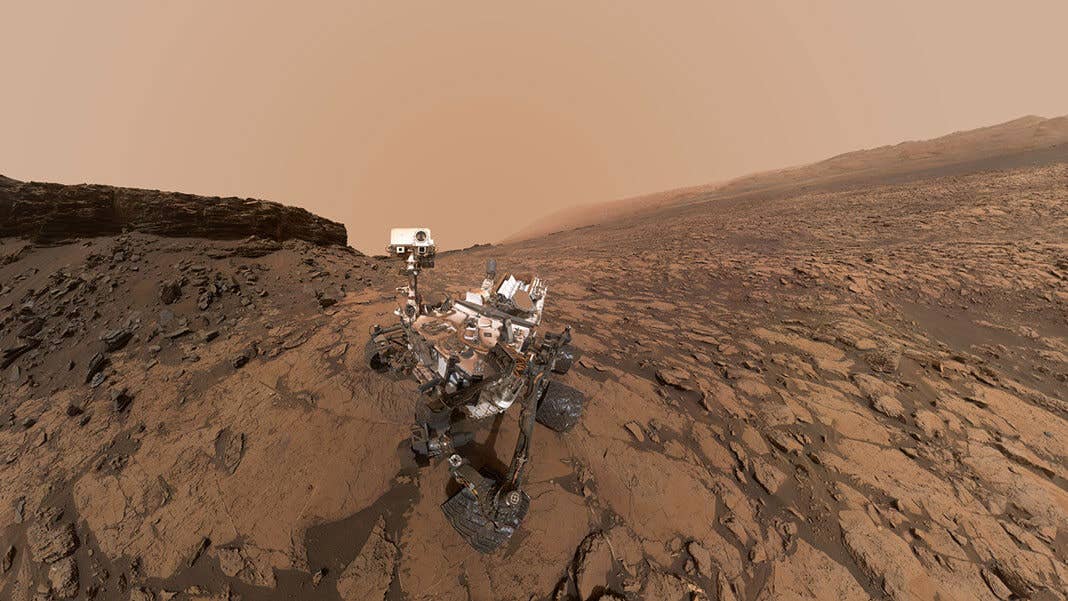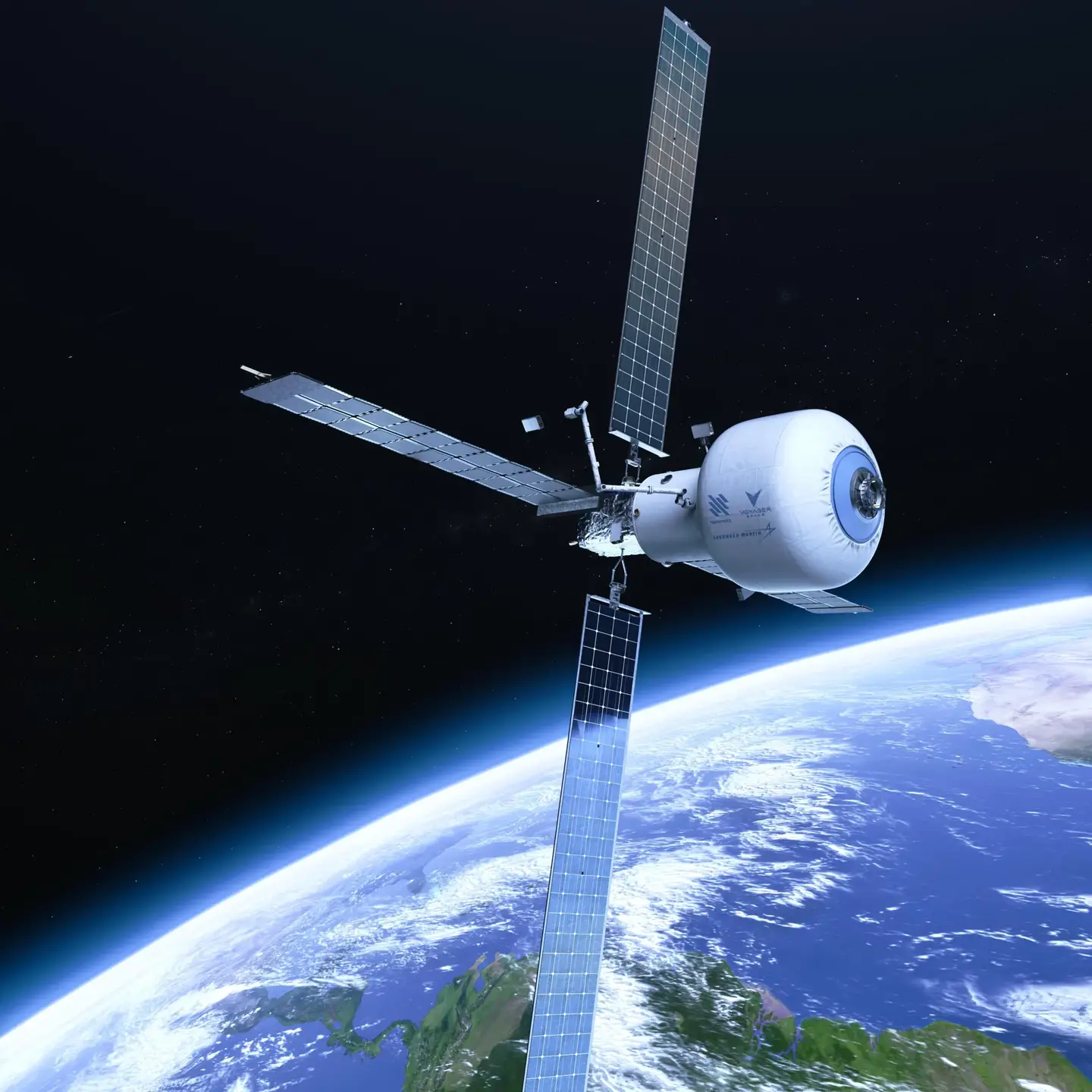Nuke Mars? Here Are Some (Hopefully Better) Alternatives

Share
Scientists and science fiction writers have been toying with the idea of terraforming Mars for the better part of a century. Turning the red planet green is seen as a crucial step towards humankind becoming an interstellar species.
One recent suggestion is that it could be done by launching nuclear weapons at Mars. The explosions would, in theory, release CO2 and create a greenhouse effect, thereby increasing its frigid temperatures.
It sounds wild, bordering on crazy, but so do many of the other ideas that have been floated about how we could potentially make Mars support human life. Each has its own merits and challenges, but a common factor for all is that they need exponential technologies to advance before being viable.
Nuking Mars
Nuking Mars hit viral take-off recently when Elon Musk tweeted that we should considering using nuclear weapons to terraform the Red Planet. It’s an idea Musk has floated several times over the last few years, and now it’s got its own t-shirt. Musk himself has since seemed to backtrack a bit, stating that he wasn’t suggesting nukes are the only way to go, only that we should be open to exploring a wide range of options.
Perhaps we should start by scratching nukes off the list entirely. Ethical and legal issues aside, it would probably require us setting off about 3,000 nukes over Mars a day, for about 7 weeks. Long before we’d be finished, we’d run out of nukes.
For other ideas, we can turn to sci-fi writers and scientists, including Carl Sagan and NASA. NASA released On the Habitability of Mars: An Approach to Planetary Ecosynthesis in 1976, which highlights genetically engineered photosynthetic organisms and melting the polar ice caps as potential ways of greening Mars.
We’ll get back to how NASA feels about terraforming Mars today, but first let’s meet some of the other possible ways we could go about it.
Meet the Candidates
Asteroids likely played a central role in making Earth the green planet it is today. We could potentially try doing the same to Mars by hurling either many smaller or a few massive asteroids at the planet. The assault with celestial bodies would release masses of CO2, as well as possibly water.
If it were a cooking recipe, using mirrors to terraform Mars would go as follows: build a range of massive space mirrors with a diameter about the distance between Washington DC and Philadelphia. Reflect the sun’s rays onto Mars to vaporize CO2 trapped on the planet in order to trigger a greenhouse effect. Bake until ready.
Genetically engineered microbes could be a way to produce a breathable atmosphere on Mars via the microbes’ photosynthesis. They would face harsh living conditions, but the recent Israeli mission to our moon is testament to how hardy microbes are. An unknown number of tardigrades were on board the craft and they might still be alive (and if so, they’re probably wondering what just happened to them).
We may also try a frontal industrial revolution-style attack. It would involve setting up factories on the planet with the sole purpose of producing gases such as methane, CO2, and CFCs, alongside water vapor, and releasing them into the atmosphere. A distinctly tongue-in-cheek article has suggested that the same could perhaps be achieved by the wholesale "export" of fossil fuel company decision-makers to Mars.
Not in the Clear
The proposed ideas are still more akin to drawing snow forts on a piece of paper than practical solutions. A central issue for them all is whether the necessary materials are found on Mars or in its general vicinity. For some, like asteroids, the answer is no (although there’s an abundance of them between Mars and Jupiter). Others, such as the materials needed for construction of giant mirrors, remain more unclear. The same applies to the amount of water or greenhouse gases trapped in Mars’ rocky surface, without which most terraforming processes would likely stall.
Other issues also still need to be addressed. For example, the magnetic field surrounding Mars is less extensive than the one surrounding Earth. Consequentially, the planet’s ability to "latch on" to atmospheric elements and block harmful solar radiation is lower. In other words, we need to find a solution or risk seeing much of the atmospheric elements produced during terraforming processes drift off into space.
Be Part of the Future
Sign up to receive top stories about groundbreaking technologies and visionary thinkers from SingularityHub.


With that in mind, it may not come as a surprise that a NASA study from 2018 looked at the last 20 years of spacecraft observations of Mars and concluded that it is not possible to terraform Mars with present-day technology. It goes on to say that "any such efforts have to be very far into the future."
Of course, not all such efforts need to be far off in the distant future. If and when we decide to set up permanent residency on our red neighbor, it need not be a wholesale operation. The first step will likely be creating biodome structures using, for example, bubbles of silica aerogel that can mimic Earth’s atmosphere.
Enter Exponential Technology
You might well be asking, “if it’s so difficult, why bother trying to terraform Mars?” There are a series of answers, including:
- The non-answer: that’s an excellent question
- The Everest response: because it’s there and we might be able to do it
- The depressing reply: we’re using up our current planet and may need a new one
- The Star Trek retort: because it’s the first step in boldly going where no one has gone before
Whatever your preferred response, it looks likely that colonizing the red planet on a global scale will require terraforming, which isn’t currently technologically viable. In the short term, we would do well to focus on fixing the human-caused risks that could be making Earth’s environment more like that of Mars or Venus.
However, if exponential technology has taught us anything, it is that progress often happens faster than we expect. Colonizing Mars through terraforming may be viable sooner than we think.
Exhibit A is a small thought experiment. Imagine going back a few decades and proposing a story outline to a science fiction writer. The story would feature a serial entrepreneur. First, he helped make money virtual, before founding a company making electrical (semi) self-driving cars and a reusable space rocket enterprise. He was about to fly people on tourist trips around the moon. Oh, and his newest idea is to terraform Mars using nuclear weapons. That writer would likely dismiss the premise as so unbelievable that it wouldn’t make for a good story.
Yet here we are—in real life.
Image Credit: NASA/JPL-Caltech/MSSS.
Marc is British, Danish, Geekish, Bookish, Sportish, and loves anything in the world that goes 'booiingg'. He is a freelance journalist and researcher living in Tokyo and writes about all things science and tech. Follow Marc on Twitter (@wokattack1).
Related Articles

The Era of Private Space Stations Launches in 2026

Data Centers in Space: Will 2027 Really Be the Year AI Goes to Orbit?

Scientists Say We Need a Circular Space Economy to Avoid Trashing Orbit
What we’re reading